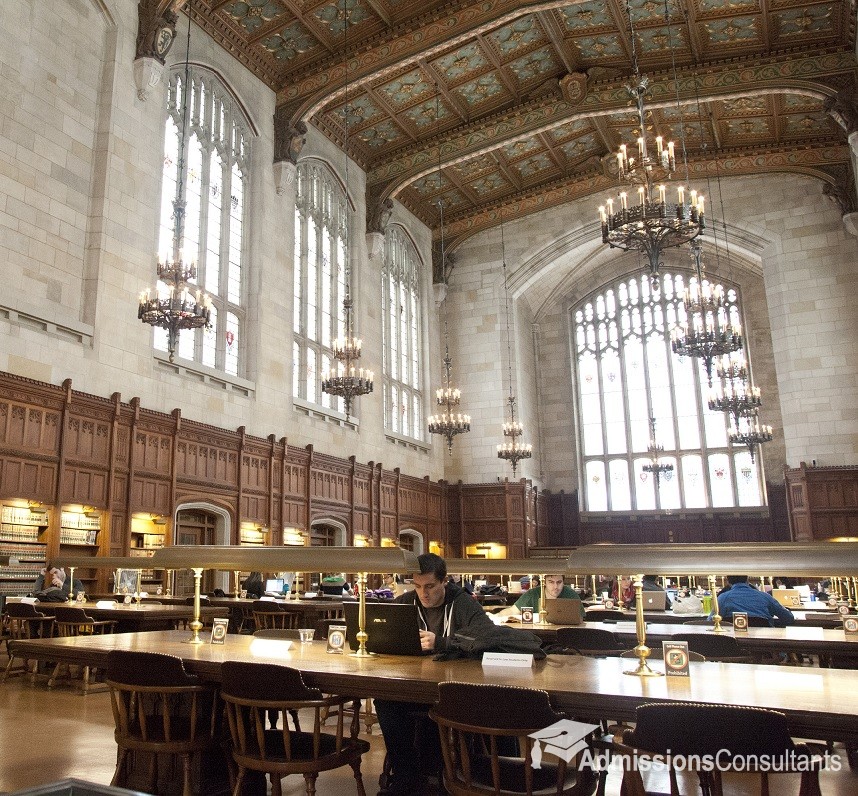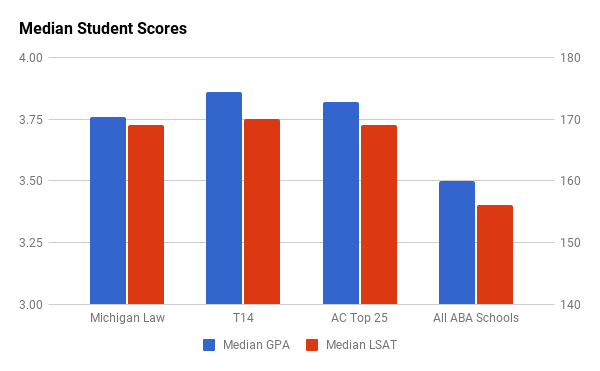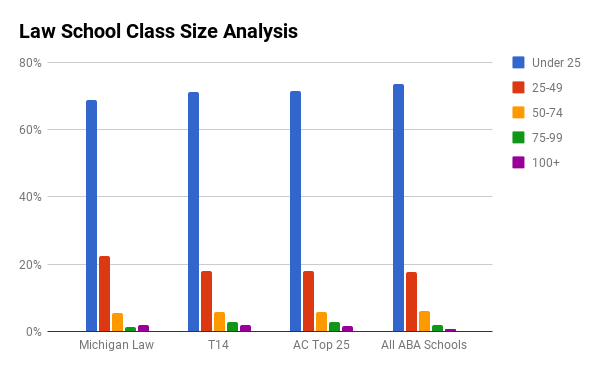 The University of Michigan Law School was founded in 1859 and is located in Ann Arbor. Despite having a bigger population than many other top schools, Michigan Law maintains a respectable student to faculty ratio. The types of classes range from strictly lecture based to some that are entirely discussion-based courses.
The University of Michigan Law School was founded in 1859 and is located in Ann Arbor. Despite having a bigger population than many other top schools, Michigan Law maintains a respectable student to faculty ratio. The types of classes range from strictly lecture based to some that are entirely discussion-based courses.
Michigan Law currently offers J.D., LL.M., and S.J.D. degrees. Some students choose to complete dual degrees such as Law and Business Administration or Law and Natural Resources. First-year students must take courses in civil procedure, contracts, criminal law, constitutional law, property and torts. They are also required to take a Legal Practice course both semesters. Outside of the mandatory classes during their first year, students also must take Transnational Law. The most popular focuses at Michigan Law are Clinical Training, Intellectual Property Law, International Law and Tax Law. Many students participate in intramural or extramural moot court competitions to help prepare for real courtroom situations.
 Additionally, many students take advantage of the study abroad program. They can spend a semester in places like Amsterdam Law School, Japan’s Waseda University Law School, or Germany’s Bucerius Law School. About 470 students work for one of the nine legal journals on campus every year. The “Michigan Law Review” is one of the oldest legal journals in the country. Other journals include “University of Michigan Journal of Law Reform” and “Michigan Telecommunications and Technology Law Review.” Students can also take part in the Student Funded Fellowships (SFF) program, which funds Michigan Law students who work public interest summer jobs with low pay. However, there are usually twice as many student applicants than grants that can be funded. There are also many extracurricular activities to participate in, with more than 50 student organizations on campus.
Additionally, many students take advantage of the study abroad program. They can spend a semester in places like Amsterdam Law School, Japan’s Waseda University Law School, or Germany’s Bucerius Law School. About 470 students work for one of the nine legal journals on campus every year. The “Michigan Law Review” is one of the oldest legal journals in the country. Other journals include “University of Michigan Journal of Law Reform” and “Michigan Telecommunications and Technology Law Review.” Students can also take part in the Student Funded Fellowships (SFF) program, which funds Michigan Law students who work public interest summer jobs with low pay. However, there are usually twice as many student applicants than grants that can be funded. There are also many extracurricular activities to participate in, with more than 50 student organizations on campus.
The law school offers some on-campus living arrangements, but many choose to live in the neighboring communities. Because of the challenging academic courses and the strong faculty network, Michigan Law has become one of the top law schools in the country. Students interested in a slightly bigger campus with larger class sizes will find themselves at home at Michigan Law.
2023 acceptance rate: 12.58%
Number of 2023 applicants: 6,425
Number of 2023 matriculants: 275
LSAT (median): 171
GPA (median): 3.85
LSAT (25 to 75 percentile): 165 to 172
GPA (25 to 75 percentile): 3.64 to 3.92
Early decision deadline of November 15.
Regular decision deadline of February 29 with decisions made on a rolling basis.
In-state tuition (2023-2024): $69,162
Out-of-state tuition (2023-2024): $72,162
Room, board ,and other (2023-2024): $24,786
Estimated in-state cost of attendance (2023-2024): $93,948
Estimated out-of-state cost of attendance (2023-2024): $96,984
Students who receive grants: 85%
Median grant amount: $30,000
![]() Conditional Scholarships
Conditional Scholarships
University of Michigan does not award law school scholarships that may be reduced or eliminated based on academic performance other than failure to maintain good academic standing.
Employment Statistics
Employed full-time, long-term, bar passage required: 95.0%
Employed full-time, long-term, JD advantage: 1.9%
Career Placement Results
BigLaw: 54.1%
Federal Clerkships: 10.0%
Transfers
Net Transfers: +12
Transfers Out: 2
Average Bar Passage Differential (first time takers): 17.39%
Class Size Analysis
Under 25: 70%
25-49: 24%
50-74: 3%
75-99: 3%
100+: 0%

- 625 South State Street Ann Arbor, MI 48109-1215
- (734) 764-1358
- law.jd.admissions@umich.edu
- https://michigan.law.umich.edu/











